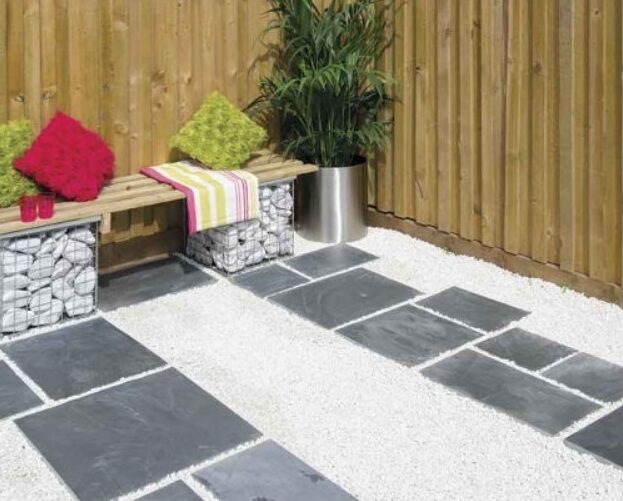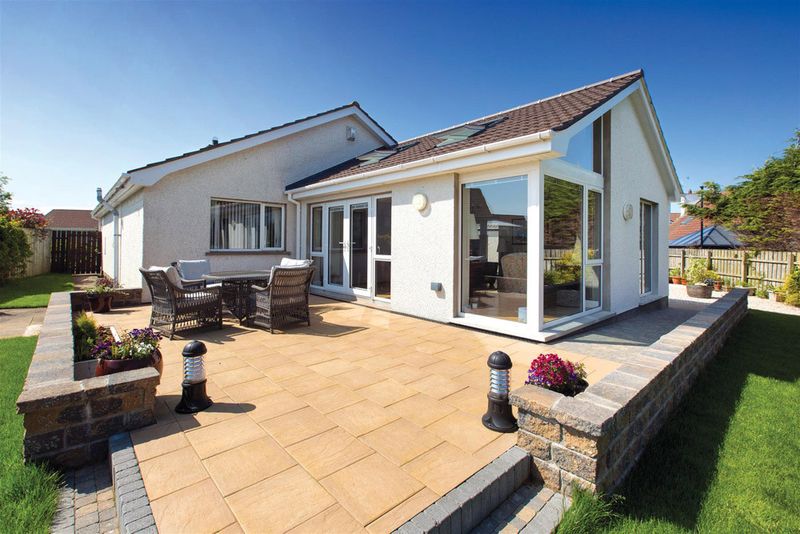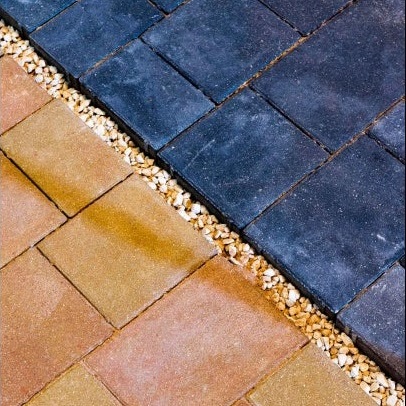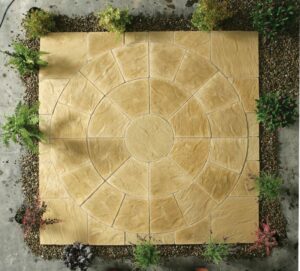Choosing a paving pattern doesn’t only depend on what design you want, but also the reason for your installation of a patio.
The good news is:
There are plenty of marvellous paving patterns and designs for you to choose from.
With that in mind, here’s your guide on how to choose a paving pattern for your very own paving project!

Table of contents:
Do I need a paving plan?
It’s all well wanting a design, but do you know what you’re going to do as a design and what your budget is?
Make sure you have these factors considered beforehand, as well as the use of your patio to ensure it is fit for purpose.

What will my paving be used for?
A paving pattern isn’t just chosen due to style, but also because of the use of the paving design. For example, if a space has heavy traffic going through or is a driveway then this presents a higher risk of wearing away. So a pattern that involves the interlocking style, such as the herringbone, is preferred.
On the other hand, a courtyard, patio or other social-style areas with less heavy traffic can be treated to a much more varied style like the stretcher or basketweave paving pattern.
Below is a list of paving patterns and designs and what area they’re more suited to:
| Paving style | Uses |
| Herringbone | •Driveways •High-traffic areas •Uncommonly used in backyards •Suited to contemporary home styles |
| Basket weave | •Courtyards •Backyards •Patios |
| Stretcher bond | •Curved pathways •Patios •Suited to traditional home styles |
| Bond | •Patios • Suited to traditional homes styles |
| Stack bond | •Courtyards •Patios |
| Mixed stone/asymmetrical | •Suited to rustic home styles •Suited to natural home styles |
You can find out more about the appearance of paving patterns via our ‘Paving buyer’s guide‘.

What colour(s) are best for a paving pattern?
Luckily, you can have many different colours and even paint over paving. This will, of course, depend on your requirements. So think carefully about what you want as your final design and plan the colours around the pattern as well as the theme.
Here are some examples of colours for you to choose from:
- Eastern sand
- Corn field
- Lakefell
- Scottish glen
- Antique
- York gold
Natural colours are most common, but many modern paving patterns and designs do offer a variety of greys and other unique colours. It’s also worth noting that colours can change over time due to exposure to various weathers.
You can also have special paving inserts to add that little extra touch to the standard paving design! This could be something like a stone circle to act as a central piece of the paving. You could even have a stone circle or its border in a different colour!
Can I have more than one colour paving?
The short answer is yes! The right colours together can enhance the appearance of each colour used in the paving. For example, if you have a cream colour it can be complimented around the headers or footers with a nice brick red colour. The possibilities are endless!
If you want to have a consistent colour with a little bit of change, you could even use the same colour with various shades around the borders.

What is efflorescence on paving?
Something that’s more often than not a recurring feature of paving slabs is the appearance of efflorescence. A white powder that can form on the face of slabs; caused by ground and/or weather conditions. However, this isn’t something too concerning. And with proper cleaning, it can be a short-lived issue that won’t affect your paving patterns and designs in the long run.
When it comes down to it, paving patterns can be what you desire. Just make sure you’re prepared as much as possible before going ahead with the purchase and installation. If you need any other patio and paving guides, you can find out ‘how to lay a patio‘ and more via our Help and Advice guides.















